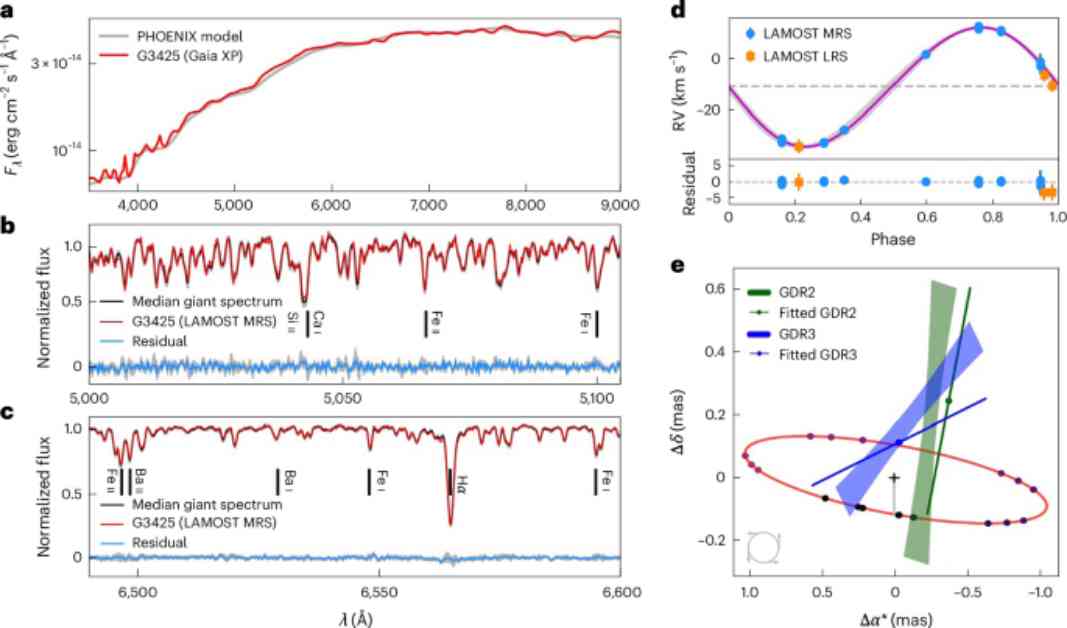Data availability for the LAMOST spectra used in this study can be found on the LAMOST database website. The RV data, stellar parameters of the visible star, and parameters of known black holes are available in the Supplementary Information tables. Additional data supporting the plots and findings in the paper can be requested from the corresponding authors.
The references cited in the article provide further information on the instruments and missions used in the study, such as the LAMOST telescope, Gaia mission, and previous research on black hole mass distributions.
The article discusses the identification of a potential mass-gap black hole in a wide binary system. The authors present detailed analyses of RV data, astrometric data, and spectral disentangling to reveal the characteristics of the binary system. The findings suggest the existence of a black hole in a circular orbit with a (sub)giant companion.
The extended data and supplementary information included in the article provide additional insights into the methodology, results, and implications of the study. Figures show optimal orbital solutions, position in the Hertzsprung-Russell diagram, SED fitting, spectral disentangling, and number distribution of Galactic black hole binaries. Tables list Kepler orbital parameters and detailed parameters for the binary system studied.
Overall, the article sheds light on the discovery of a unique black hole binary system and highlights the importance of advanced observational techniques in understanding the properties of such systems in the universe.












